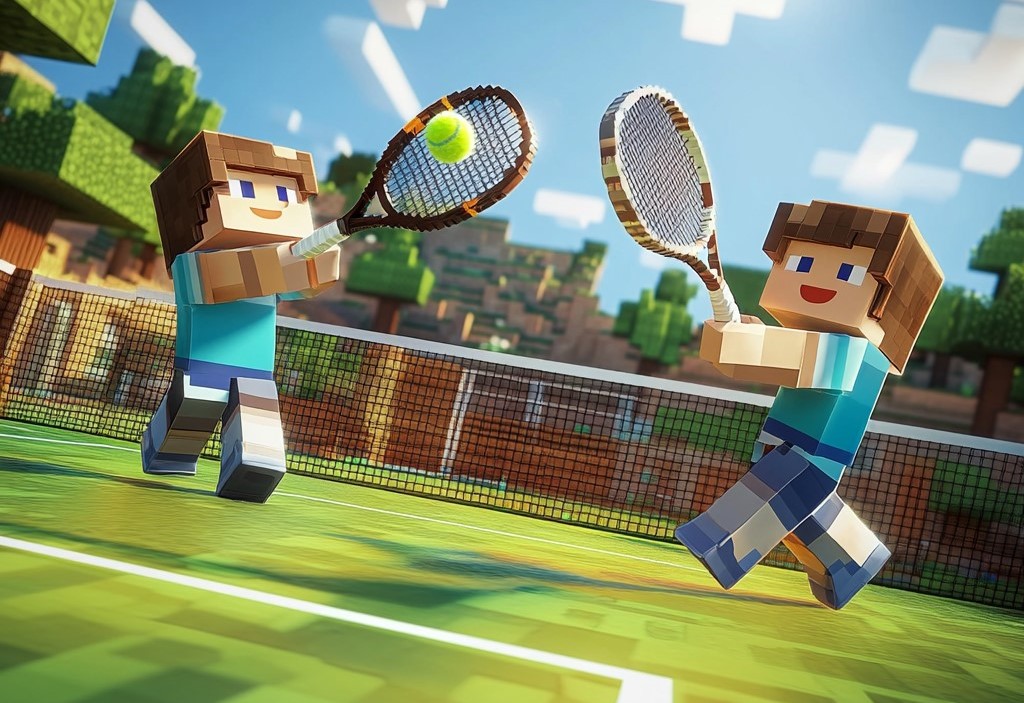In the most recent Interactive Games & Entertainment Association’s study Australia Plays 2023 (involving 1219 Australian households), 69 per cent of respondents said they believe games can improve student mental health and motivate them, while upwards of 70 per cent agreed that they inspire students to be creative, help them cope with stress and overcome learning difficulties, and assist with connection between students.
Keen to advocate for students to not passively consume technology, but actively create and engage with it, Liam Bassett says his school’s program is well ahead of the game (pardon the pun).
“In schools, we are increasingly integrating video games as part of our extracurricular activities, but also our academic programs,” Bassett, who is Director of Digital Learning at Westbourne Grammar School in Truganina, in Melbourne’s inner west, tells EducationHQ.
“For us, we broadly use the term ‘eSports’, and we’ve recently launched our new eSports program, which really is designed to foster students’ passion for gaming and provide them with opportunities to develop important skills such as teamwork, strategic thinking, problem solving, leadership, communication, creativity and adaptability."
To put things in perspective, it is estimated that 5.5 million Australians play video games. By comparison, the AusPlay national sports participation survey shows that 3.3 million participated in swimming and 2.6 million in cycling in 2022.
Bassett says his school views eSports as a new platform for students to engage with peers across multiple year levels, build communities and explore new avenues to self-expression.
“So for us, we have an eSports program and physical health is a really essential part of that.
“And so at the beginning of every session, students actually run three kilometres, and they’ve partaken in a physical workout with core and strength exercises.”

Westbourne Grammar School’s Liam Bassett says the school’s new eSports program is designed to foster students' passion for video gaming and help them to develop important skills such as teamwork, strategic thinking, problem solving, leadership, communication, creativity and adaptability.
When the program was created, the intention was for it to be emblematic of what it’s like to be involved in professional eSports as a career.
“So we didn’t want it to be just a video game club where students come in at lunchtime and play games, we’ve actually created and designed a classroom for esports, which we call our ‘esports studio’,” Bassett explains.
“And this offers students access to state-of-the-art virtual and augmented reality technology, as well as a range of collaborative digital tools and video games.
“And so for us, experiential learning is facilitated through driving simulators and flight simulators, which provide students with skills that have real world application, and this technology is incorporated into our curriculum, so it provides students with that unique learning experience that combines technology, gaming and inquiry.”
Very much along these lines, and with a host of potential learning opportunities and benefits for students, Australian Open tennis organisers have launched the AO Schools Block Buster Tennis Challenge.
In collaboration with the Australian Esports League (AEL) as part of its Minecraft Education Esports Program in Schools, the Challenge is open to Years 4-11 across the nation and is designed to inspire creativity and teamwork, emphasising STEM skills and sustainable design, and encouraging students to integrate eco-friendly features.
The prize pool for the Challenge is more than $25,000, with winners to be announced in December.
The national champions will be flown to Melbourne in January for an unforgettable AO experience, including a money-can’t-buy Rod Laver Arena court walk and behind-the-scenes tour, a player meet and greet, and a photoshoot with the AO trophies.
Bassetts says the Challenge really aligns with his school’s holistic approach to education.
“It’s unique in that it merges the excitement of tennis with the creativity and innovation of Minecraft Education Edition, a platform that many of our students are highly engaged with..." he says.
The Challenge presents an opportunity for students to think critically and creatively, which pushes the boundaries of traditional sports education, while it still promotes the benefits of physical activity, too, according to Bassett.
“The integration of eSports and real world tennis, allows students to engage with the sport in a way that feels relevant and exciting, and also encourages them to explore connections between physical health, creativity and technology,” he says.
By using the Minecraft Education edition to design and build tennis courts, students are not only learning the core fundamentals of tennis, but they’re also enhancing their skills in digital design, problem solving and collaboration, which are key areas that are prioritised in the curriculum.
Teams can be made up of two or four participants, and students from Years 4-6 will be building and designing something slightly different to older students in Years 7-10.

Whether you’re a tennis enthusiast, a budding architect, or just love the endless possibilities of Minecraft, this is your opportunity to shine.
“At the core of our teaching and learning philosophy, which we call Inspire, it places character and agency as its core tenants,” Bassett explains.
“So we really want our students to actively take ownership over this and actively take ownership over their learning experiences, so it’s a real student-centric approach, which will hopefully lead to a more engaged and participatory educational environment.”
The competition, and by extension, the Minecraft Education Edition, is really just the vessel for developing meaningful and authentic skills, Bassett concludes.
“If you think about this challenge, students are required to think strategically about space, form and function, and blending creativity with practical considerations; they’ll have to consider everything from court dimensions and layout to functionality and overall playability - and that really pushes them, I think, to apply their understanding of tennis in a virtual environment.
“But again, by doing so, they’re developing valuable spatial awareness and digital design skills, and the challenge as a whole, I think, will really enhance their ability to plan, organise, execute complex tasks, which are all key life skills that go well beyond the tennis court...
To learn more about the AO Schools Block Buster Tennis Challenge on Minecraft Education, click here.














